WHAT TO DO, SEE AND TRY
As part of our upcoming international academic conference, we are pleased to offer attendees both local and provincial tours.
Local City Tour:
The local city tour is included in the registration fee. Participants will have the opportunity to visit the Harbin Institute of Technology Museum and the Aerospace Museum, exploring significant scientific and technological advancements. Professional guides will provide in-depth explanations of the exhibits, enhancing your experience. Complimentary bus transportation is also provided between the two museums, ensuring a seamless and comfortable journey.
Provincial Tour:
For those interested in extending their experience, we offer a 2-3 day provincial tour, NOT included in the registration fee. The price for this tour ranges from RMB 800 to RMB 2000, depending on the number of participants and the chosen itinerary. The tours are scheduled to depart on August 25th or 26th. We offer three enticing tour routes:
- Route 1: Wudalianchi Trip – Explore the famed volcanic region with its unique natural beauty.
- Route 2: Yichun Trip – Immerse yourself in the vast expanses of Yichun’s primeval forests and take in the scenic views along the China-Russia border.
- Route 3: Jingbo Lake Trip – Visit the spectacular Jingbo Lake, known for its clear waters and picturesque surroundings.
Please note that the operation of these provincial routes is contingent upon attracting sufficient participants. If a route does NOT meet the required number of registrations, we will make arrangements for those participants to join an alternative route.
Detailed descriptions of the famous attractions are as follows.
Local City Tour: Harbin Institute of Technology Museum and Aerospace Museum
The Harbin Institute of Technology (HIT), renowned for its pioneering research and educational excellence, offers visitors a unique opportunity to explore its rich history and contributions to science and technology through two exceptional museums: the HIT History Museum and the Aerospace Museum. Located within the HIT campus in Harbin, these museums provide a deep dive into the academic and technological advancements that have shaped both the university and modern China.
The HIT History Museum offers a comprehensive look at the university’s storied past, with exhibits tracing its origins back to 1920. Visitors can view original building plans, models of the 1920 campus, and a collection of artifacts and photographs that document the challenges faced by the founders. Additionally, the museum highlights the academic contributions of HIT scholars, displaying significant scientific breakthroughs and patents that have advanced knowledge in engineering and technology. The cultural impact of the university is also showcased through the personal stories of notable alumni who have made contributions to literature, arts, and social sciences.
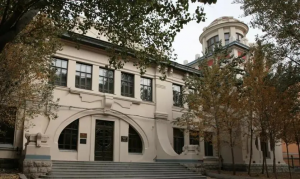
The HIT Aerospace Museum celebrates HIT’s role in China’s aerospace industry, providing an engaging experience for those passionate about space exploration and aviation technology. The museum features detailed replicas of satellites and spacecraft developed by HIT researchers, complete with interactive displays explaining their missions and technological innovations. Guests can also participate in a hands-on simulation of a mission control center, gaining a deeper understanding of the complex processes involved in space missions. The museum also commemorates the milestones achieved in aerospace engineering, from the creation of advanced materials to breakthroughs in rocket technology, solidifying China’s position as a global leader in this field.

Provincial Tour:
Route 1: Wudalianchi Trip
Er Long Yan Spring, One of the notable cold springs in Wudalianchi, Er Long Yan Spring is characterized by its crystal-clear waters rich in minerals like silicic acid, believed to have therapeutic effects on various ailments, particularly ocular diseases. The spring is a natural wonder, offering a serene environment for both relaxation and the study of its unique mineral properties and health benefits.
Yaoquan Mountain, known for its standard volcanic cone shape and significant geological formation from approximately 1.05 to 1.41 million years ago, stands as an open-air classroom for volcanic studies. It provides an exceptional site for understanding volcanic architecture and sedimentology, especially with the notable Jade Avalokitesvara statue perched atop, blending natural sciences with cultural spirituality.
Saint Spring Square is the central hub of Wudalianchi, presenting a panorama of the region’s volcanic origins. The square is not only a cultural landmark but also a geographical one, where visitors can begin to understand the interplay between volcanic activity and the development of local communities throughout history.
Wudalianchi Global Geopark Museum is an academic treasure trove that narrates the story of the region’s volcanic activity. Exhibits showcase the formation of the Wudalianchi Geopark, its geological significance, and the ecological systems it supports. It provides rich educational material for visitors interested in earth sciences, ecology, and geothermal research.
These four attractions in Wudalianchi represent not only the area’s natural beauty but also its significant contribution to scientific research and education, offering in-depth insights into geology, hydrology, and volcanic activity.
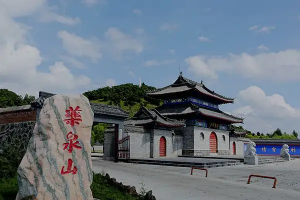
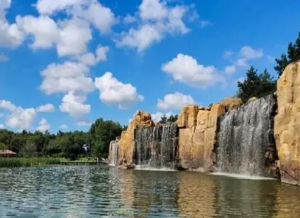
Route 2: Yichun Trip
Tangwanghe Linhai Qishi Scenic Area is a national 4A-level tourist attraction. The unique granite forest here is currently the only geological relic discovered in China with the most complete types, typical development, and rich shapes in the Indianan period. It has high scientific research and aesthetic value and is also rare in the world.
The border river between China and Russia, Heilongjiang is the longest boundary river in the world, along with the beautiful Ussuri River in the east, flowing through the China Russia border for a total of 2400 kilometers. Whether it’s cliffs, high mountains and canyons, rolling forests, and vast green fields, along with the pure river water, they are all full of primitive, simple, and mysterious atmospheres.
Dinosaur Museum Jiayin is the earliest discovered and scientifically recorded dinosaur fossil excavation site in China. It is also renowned both domestically and internationally for burying a large number of ancient biological fossils.
Wuying National Forest Park is a centralized protected area for Chinese red pine, with the world’s largest number of red pine trees. People walk through the forest, watching small streams flow under their feet, sweet mountain springs flow through crevices, breathing in air with tens of thousands of negative oxygen ions per cubic meter, far from the hustle and bustle of the city, and fully enjoying nature.
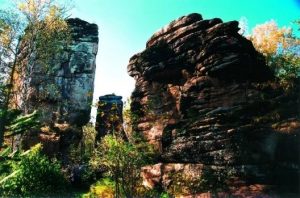
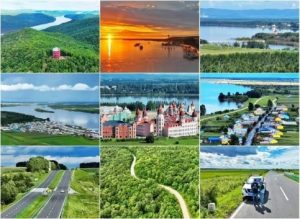
Route 3: Jingbo Lake Trip
Diaoshuilou Waterfall is the world’s largest basalt waterfall. The waterfall is the exit of Jingbo Lake. The steep cliffs are composed of basalt, and the lake water rushes down, forming a Jingbo Lake waterfall with a width of about 30 meters and a drop of over 20 meters. When the water is strong, the surrounding cliffs will form waterfalls, and the sound of the water is like thunder, with rushing currents roaring and falling.
Jingbo Grand Canyon The ancient drum tower, the old river valley cold cable bridge, the Hongxia Stone Pond, and the Jingbo Grand Canyon night scenery beautification project cleverly integrate modern lighting art with the beautiful scenery of forests and lakes. Looking at the brilliant starry sky, it will take you into the sea of peonies, experience the primitive ecology, explore forest culture, and create a dazzling night forest.
Lava Tunnel: Walking into a lava tunnel, it twists and turns. Looking up, you can see lava milk like inverted mountains and peaks. The top of the cave is crystal clear like a painted jar glaze, and the walls are colorful and colorful, resembling a palace in mythology. At the bottom of the cave are lava ropes, lava flowers, lava ripples, and so on.
The Volcano Lion Cave is a connected mountain cave formed by the airflow and impact of volcanic bombs during the eruption of craters 3 and 4, connecting the two craters. Looking out from the cave, the unique scene formed by the circular sky and the towering trees spanning between is breathtaking.
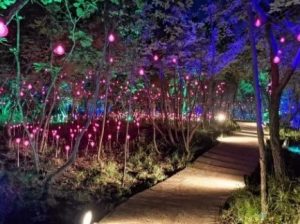
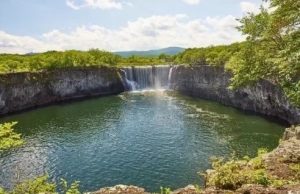
.

